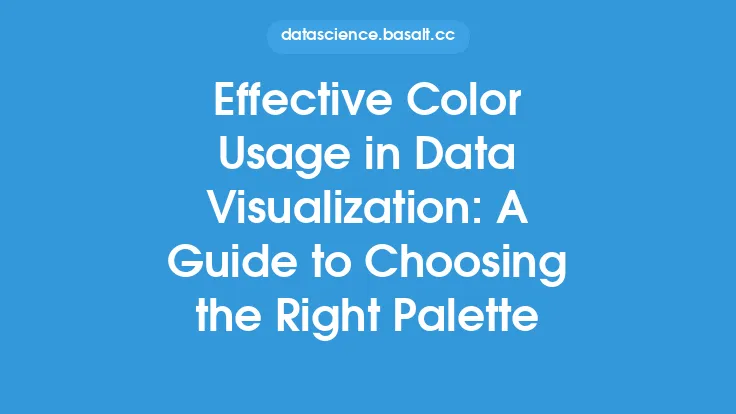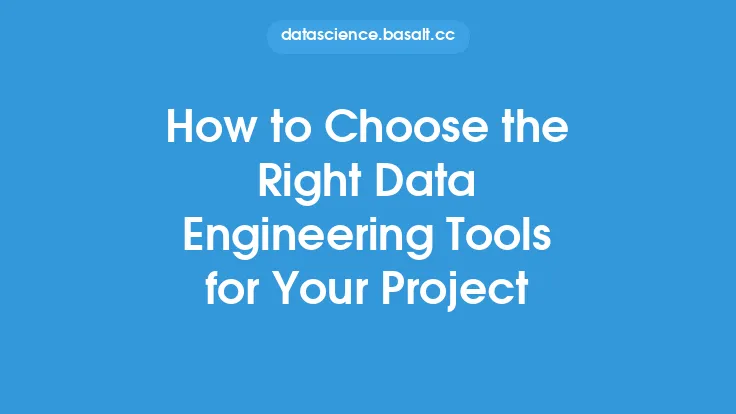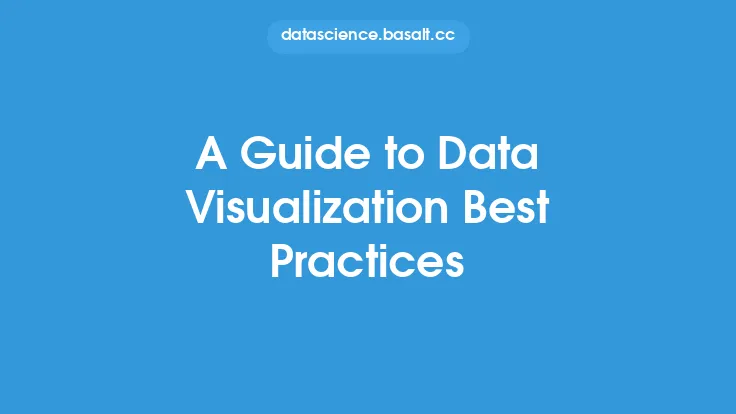When it comes to data analysis, one of the most critical aspects is being able to effectively communicate insights and findings to both technical and non-technical stakeholders. Data visualization plays a vital role in this process, as it enables the transformation of complex data into intuitive and easily digestible formats. With the plethora of data visualization tools available in the market, selecting the right one can be a daunting task. In this article, we will delve into the key considerations and factors that should guide your decision when choosing a data visualization tool.
Introduction to Data Visualization Tools
Data visualization tools are software applications that enable users to create interactive and dynamic visualizations from their data. These tools can range from simple charting libraries to complex business intelligence platforms. The primary goal of data visualization tools is to facilitate the exploration, analysis, and communication of data insights. With the right tool, users can create a wide range of visualizations, from basic charts and tables to complex dashboards and reports.
Key Considerations for Selecting Data Visualization Tools
When selecting a data visualization tool, there are several key considerations that should guide your decision. First and foremost, it is essential to define your use case and identify the specific requirements of your project. This includes determining the type of data you will be working with, the level of complexity, and the intended audience. Additionally, you should consider the technical skills and resources available to your team, as well as the scalability and flexibility of the tool.
Data Connectivity and Integration
One of the most critical factors to consider when selecting a data visualization tool is its ability to connect to various data sources. The tool should be able to integrate with your existing data infrastructure, including databases, data warehouses, and cloud storage platforms. Look for tools that support a wide range of data formats and protocols, such as CSV, JSON, and SQL. Additionally, consider tools that offer real-time data connectivity, enabling you to create visualizations that reflect the latest data updates.
Visualization Capabilities and Customization
The visualization capabilities of a tool are also a crucial consideration. Look for tools that offer a wide range of visualization types, including charts, tables, maps, and treemaps. Additionally, consider tools that provide advanced customization options, such as color palettes, fonts, and layouts. The ability to create custom visualizations can be particularly useful when working with complex data sets or creating dashboards for specific business domains.
Interactivity and User Experience
Interactivity is a key aspect of modern data visualization tools. Look for tools that enable users to interact with visualizations in real-time, using features such as filtering, drilling down, and hovering. A good user experience is also essential, with intuitive interfaces and minimal learning curves. Consider tools that offer responsive design, enabling visualizations to adapt to different screen sizes and devices.
Scalability and Performance
As the volume and complexity of your data grow, it is essential to select a tool that can scale to meet your needs. Look for tools that offer robust performance, even with large data sets, and can handle high levels of user concurrency. Additionally, consider tools that provide automated data processing and caching, enabling fast rendering of visualizations.
Security and Governance
Data security and governance are critical considerations when selecting a data visualization tool. Look for tools that provide robust security features, such as data encryption, access controls, and authentication. Additionally, consider tools that offer governance features, such as data lineage, auditing, and version control. These features can help ensure that your data is protected and that changes to visualizations are tracked and managed.
Evaluation and Comparison of Data Visualization Tools
With so many data visualization tools available, it can be challenging to evaluate and compare different options. When evaluating a tool, consider factors such as ease of use, performance, and customization options. Look for tools that offer free trials or demos, enabling you to test the tool with your own data. Additionally, consider reading reviews and case studies from other users, as well as seeking recommendations from industry experts.
Best Practices for Implementing Data Visualization Tools
Once you have selected a data visualization tool, it is essential to follow best practices for implementation. This includes defining clear goals and objectives, identifying key stakeholders, and developing a comprehensive project plan. Additionally, consider providing training and support to users, as well as establishing governance policies and procedures. By following these best practices, you can ensure that your data visualization tool is used effectively and that insights are communicated clearly to stakeholders.
Conclusion
Selecting the right data visualization tool is a critical decision that can have a significant impact on your ability to communicate insights and findings to stakeholders. By considering key factors such as data connectivity, visualization capabilities, interactivity, scalability, security, and governance, you can choose a tool that meets your specific needs and requirements. Additionally, by following best practices for implementation and evaluation, you can ensure that your data visualization tool is used effectively and that insights are communicated clearly to stakeholders. With the right tool and approach, you can unlock the full potential of your data and drive business success.





